Why Do Water Damage Specialists Need Training?
In professional circles, water damage restoration requires the expertise of a specialist - a trained technician who understands the nuances of water damage and can provide comprehensive levels of service when called upon. This is a service sector that entails water damage initiated by a burst pipe, a natural flood, or even snow related flooding. The work is not just about cleaning up a mess (and quite often a disastrous mess). It’s about providing an effective drying protocol; attending to residual areas of moisture; and restoring damaged plaster, drywall, wood, and concrete.
In some situations, water damage specialists must deal with mold that has developed as a result of water logging. More than that, water damage can create structural damage, like collapsing drywall, weakened support beams, and even damaged metal surfaces. This is why proper training is key for a professional water damage specialist. It’s about appropriate cleanup, assessment of damages, and recommendations for restoration and remediation. In professional circles, IICRC (the Institute of Inspection Cleaning and Restoration Certification) sets the standard for training.
Beyond certifying water damage specialists, IICRC is the principle training organization. Here, there are different categories that govern what professionals call “liquid destruction”. To begin with, there are 3 categories that describe “liquid destruction”.
Category 1
This category covers liquids resulting from any clean, sanitary source - faucets, toilets, drinking fountains, and the like. There are situations where Category 1 can degrade to Category 2.
Category 2
Sometimes referred to as “grey water”, this liquid category may have pollutants that cause illness when ingested - dishwasher overflow, wash machine flooding, and/or toilet overspill.
Category 3
Considered the worst category, it’s the most unsanitary. This type of water intrusion could cause severe illness or even death when ingested - sewer backup or toilet overflow (with feces).
IICRC also classifies levels of “liquid destruction”. Once again, an important reason why training is absolutely essential for water damage specialists. Education and training allows a technician to differentiate between categories and classes of water damage.
Class 1
The lowest class - the easiest to manage – with slow evaporation. There is very little (or no) wet carpeting, and moisture intrusion is limited to materials like plywood or concrete.
Class 2
This level entails carpeting, as well as furniture, and the wetness has saturated surrounding walls to level of at least 12”. Also, there may be moisture remaining in structural materials.
Class 3
With a fast evaporation rate, this class would include walls, insulation, carpeting, and sub-floors – all being water-saturated. The liquid intrusion may have come from somewhere above.
Class 4
This class is designated for what the experts call “special drying situations”. It means that enough liquid has saturated into materials like hardwood, brick, concrete, and/or stone.
For the most part, water damage management should be left to professionals. Technicians should be trained, knowledgeable, and certified. And needless to say, they should have the tools and equipment to effectively clean up and assess damage. From moisture detectors, to air movers, to air scrubbers, to dehumidifiers, professionals are armed with everything they need to succeed.
Get a Free Quote
Categories
black mold mold removal mold bathroom mold mold prevention mold removal asbestos asbestos removal asbestos abatement asbestos in the home cold room mold mold inspection & removal mold inspection mold removal calgary mold from wood mold testing mold growth asbestos removal asbestos mold growth mold fungus mold fungus smell








